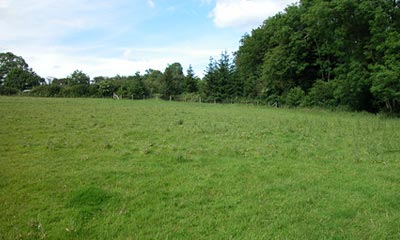Why green fields could be buried by tide of tarmac
Green fields edging the South Downs could be buried under concrete and tarmac if recommendations from a Government report are accepted.
Economist Kate Barker is calling for protected areas of the countryside, such as areas of outstanding natural beauty and Green Belt land, to be replaced by "green wedges" or "green corridors" with gaps for homes and other developments to be built.
The report argues that this radical shift is needed to tackle ballooning house prices and a lack of choice for businesses and homeowners.
By opening up previously protected areas, thousands of extra homes and shops could be built.
The South Downs Society is calling for assurances that the proposals will not lead to the destruction of special wildlife sites or areas of open space.

Much of the South Downs is unlikely to be affected by any change in planning policy if, as expected, it is granted National Park status next year.
But areas of outstanding natural beauty which are not included in the National Park and agricultural land bordering the protected area could be snapped up by developers.
The Argus has identified a number of sites which fall outside of the new National Park and could, if the recommendations are accepted, be used for housing or new businesses.
This includes the area around Sheepcote Valley, Brighton, a section of land designated of outstanding natural beauty in Hangleton, sandwiched between King George VI Avenue and the A27, and vast areas to the north of the Downs, including land near Hurstpierpoint.
The leader of West Sussex County Council, Henry Smith, has also warned that even National Park status may not save parts of the South Downs.
Jon Martin, chairman of the society, said: "We are pleased the report recognises that national parks remain in need of particular protection.
"However, it is very disturbing that the report opens the way for more development on precious Green Belt land.
"This will have a particularly damaging effect on natural beauty, wildlife and public enjoyment in these areas, and could also impact on the area likely to be included within the South Downs National Park in the Low Weald of Hampshire."
Jacquetta Fewster, director of the South Downs Society, warned that the recommendations could bring bulldozers to this beautiful part of the countryside.
She said: "It is vital that land around the proposed National Park is not buried under concrete and tarmac.
"Many of these sites provide important foraging areas for wild creatures, and wildlife populations on the Downs could be severely harmed.
"Unsightly development so close to the National Park would spoil the enjoyment of people exploring the South Downs.
"There are areas of outstanding natural beauty which might not make it into the National Park and could be under threat, but the bigger risk is the other areas which have no protection."
Brighton and Hove City Council leader Simon Burgess said that even if the rules were relaxed he would not look for more development on the fringes of the city.
He said: "We need to be looking more east and west, not north, in terms of where people are going to live.
"I am not saying that Worthing should be part of Brighton and Hove but it is about finding locations in the east-west coastal conurbation.
"What makes this city special is the fact we have the Downs and the sea and we really need to protect that."
The proposals are being looked at by Sir Michael Lyons, as part of his investigation into the future of council tax and local funding which will be published next spring.
theargus.co.uk, 19.12.2006
